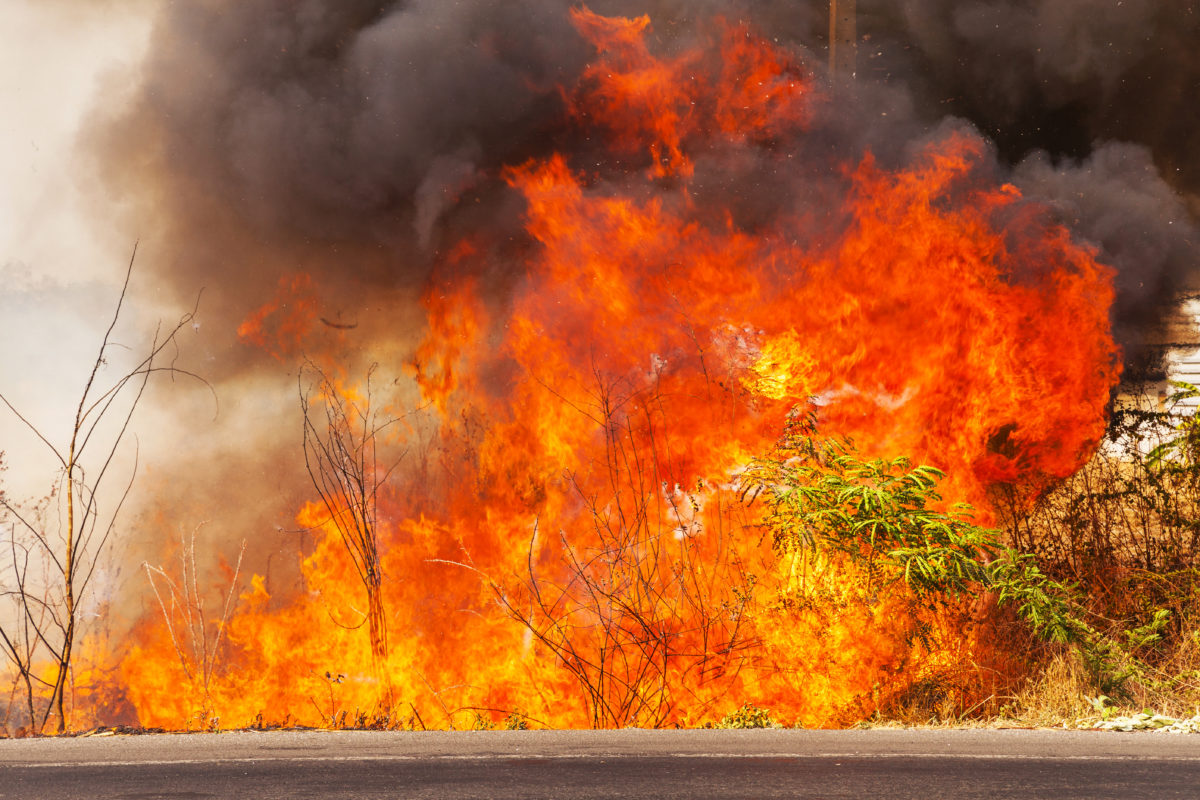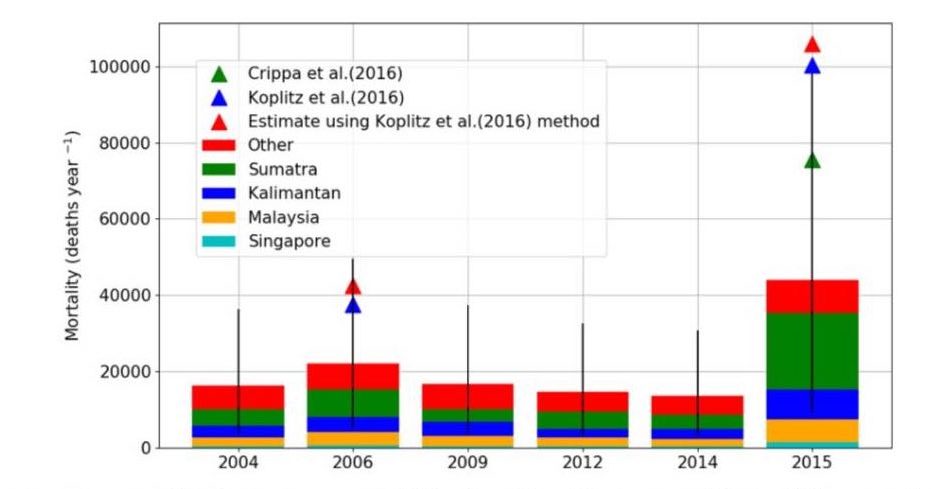The health burden of fires across Equatorial Asia
Vegetation and peat fires in Equatorial Asia caused over 100,000 premature deaths between 2004 and 2015, finds new study from scientists at the University of Leeds.
Large fire events occur every few years in Indonesia, emitting huge quantities of smoke into the atmosphere. Small particles emitted from fires (known as PM2.5; particulate matter < 2.5µm in diameter) can enter the lungs and blood stream, and have been associated with respiratory and heart problems.
These fires are predominantly started in order to clear land ready for planting crops and plantations. Land cleared for agriculture can become more susceptible to fires, particularly peatland which is often drained during the conversion process. Every few years, increased drought (often caused by an El Nino event) occurs during the dry season and many fires burn.

Lead author and PhD student, Laura Kiely said “Indonesia contains large areas of tropical peatland and fires in these areas contribute substantial amounts of PM2.5 emissions. These emissions are important due to the detrimental effects they have on human health when they enter our respiratory systems, and the potential to lead to longer term health problems.”.
Peat fire emissions are challenging for scientists to model as they occur close to the ground, making it difficult for satellites to detect the depth of the burn. This study is novel in its attempt to consistently estimate the impacts of particulate emissions from fires on air quality and public health in Equatorial Asia during this time period.
Combining a model of fire emissions previously developed by the team, and the WRF-chem model of the atmosphere, Kiely et al. were able to simulate dry season PM2.5 concentrations for six major fire years during the period 2004-2015. Mortality functions were then applied to estimate the number of excess deaths that may have been caused by exposure to smoke from these fires.

Figure 2. from Kiely et al., 2020 shows Monthly primary PM2.5 fire emissions from Indonesia between 2004 and 2015, from the FINNv1.5, GFED4s and peatSM inventories.
The highest fire emissions were observed in the year 2015, with 9.4 Tg of PM emitted during the dry season. The elevated levels of PM are attributed to the average deeper burning of the fires compared to other years, due to droughts caused by the El Nino in this year. The impacts on public health from long term exposure are substantial, with PM estimated to have caused 44,040 excess deaths in the year 2015, and 131,700 excess deaths between 2004 and 2015. The study estimates 94% of PM2.5 emissions from fires in Equatorial Asia to be from Indonesia. During the years studied, 22-67 million people were exposed to extended periods of poor air quality in Equatorial Asia, with most of those in Indonesia and Malaysia. The research demonstrates the substantial, and ongoing, health burden that fires cause across Equatorial Asia.

